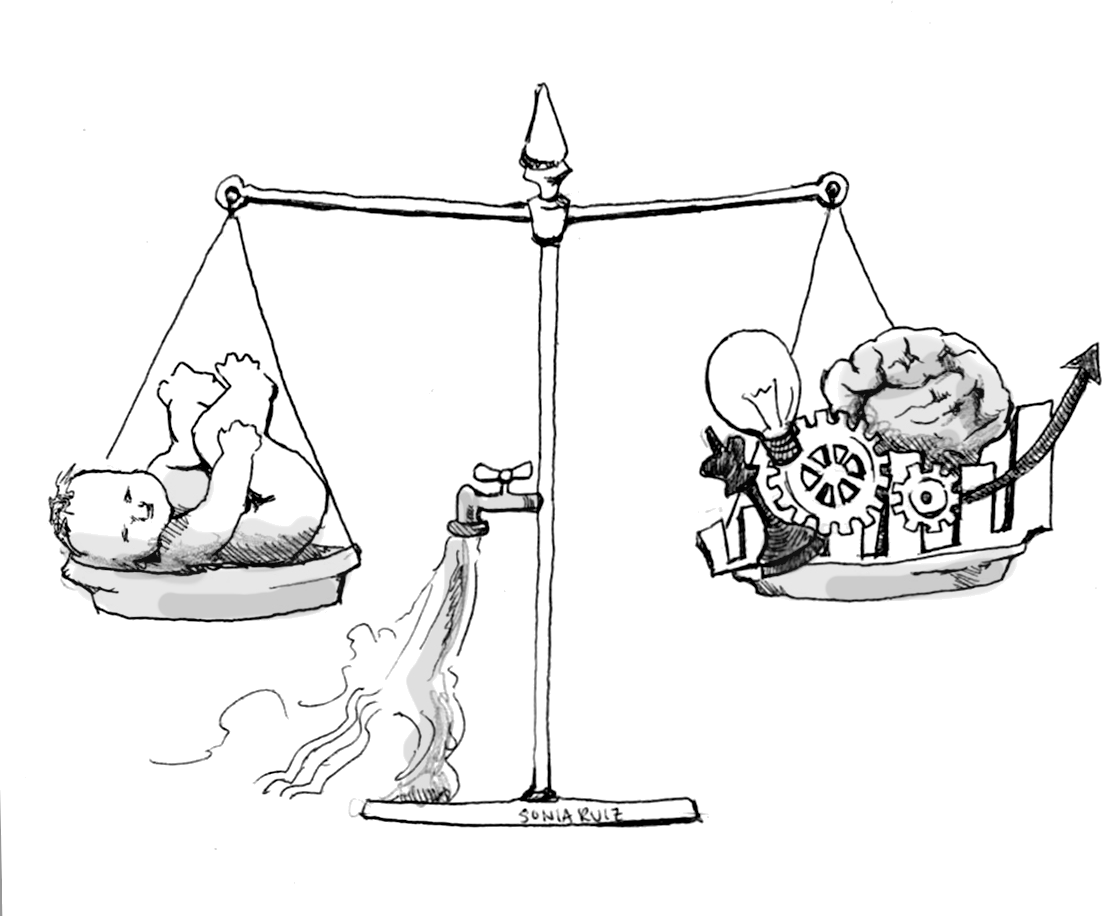
Sonia Ruiz
Using Flint, Michigan as a test case, a recent Yale research study establishes a link between contaminated water supplies and poor infant health at birth, especially in infants born to economically disadvantaged families.
In 2014, the town of Flint began using the Flint River as a public water source, resulting in unsafe levels of lead, bacteria and other contaminants in residents’ drinking water. The study found that children born to Flint mothers exposed to unclean drinking water during pregnancy had lower birth weights on average than children born to mothers living in cities with clean water during the same period of time. The effects were particularly pronounced in children born to mothers from a lower socioeconomic status. Conducted in collaboration with colleagues from Tulane University and Wuhan University, the research was published through the IZA Institute of Labor Economics in January.
“The reason we chose to look at birth weight is because we know that birth weight is the single most important indicator of human capital. If you want to use one health indicator to measure one’s long-term wellbeing, it is birth weight,” said Xi Chen, lead author and Yale professor of global health policy and economics. “There are very convincing studies showing that people with lower birth weight have poorer performance in school and lower labor market wages, and they die earlier.”
Birth weight trends have even been linked to crime rates, Chen said, so looking at the birth weights of infants born in a particular region can help researchers predict the long-term effects of water pollutants on social and financial outcomes for the population of that region.
Chen noted that the Flint water crisis is often erroneously reduced to a parable about the dangers of consuming lead. While lead is one of the main contaminants found in Flint’s drinking water, bacterial contamination of the water supply also poses a significant threat to residents of Flint and many other areas in the United States. Bacteria is usually flushed out of drinking water with a cocktail of disinfectants added to water supply pipes. When the pipes reach a certain age, however, corroding metal can interact with these disinfectants to create new chemical compounds that no longer work to fight bacterial contaminants.
“We know that for a lot of contaminants, the only solution is prevention,” Chen said. Prevention, in this case, is as straightforward as replacing outdated pipes.
In many regions experiencing clean water shortages, psychosocial interventions may also be necessary to reduce maternal stress during pregnancy, which is known to have adverse consequences for infants. For babies born in Flint, the biological effects of exposure to contaminants in utero were compounded by increased maternal stress fueled by the lack of safe drinking water.
Chen and his colleagues suggested two potential reasons that infants born to economically disadvantaged families displayed the lowest birth weights. First, mothers of a lower socioeconomic status likely had fewer opportunities to engage in avoidance behaviors — behaviors that would decrease their contact with contaminated water — such as buying bottled water to drink. Second, mothers of a lower socioeconomic status likely experienced greater stress levels while pregnant.
Rui Wang, co-author of the paper and doctorate student at Tulane University, emphasized that the significance of her team’s findings is, if anything, understated. She and her colleagues had no way to determine which mothers had engaged in avoidance behaviors and which had not, meaning that some infants included in the sample were likely born to mothers who had avoided drinking from contaminated public water supplies. If this is the case, she explained, the results of the study may underestimate the effects of a mother’s consumption of contaminated water on an infant in utero.
Over 3,000 cities and towns in the U.S. suffer from contaminated water supplies that pose a health risk to residents, according to a report from the Centers for Disease Control and Prevention.
Lydia Buonomano | lydia.buonomano@yale.edu







